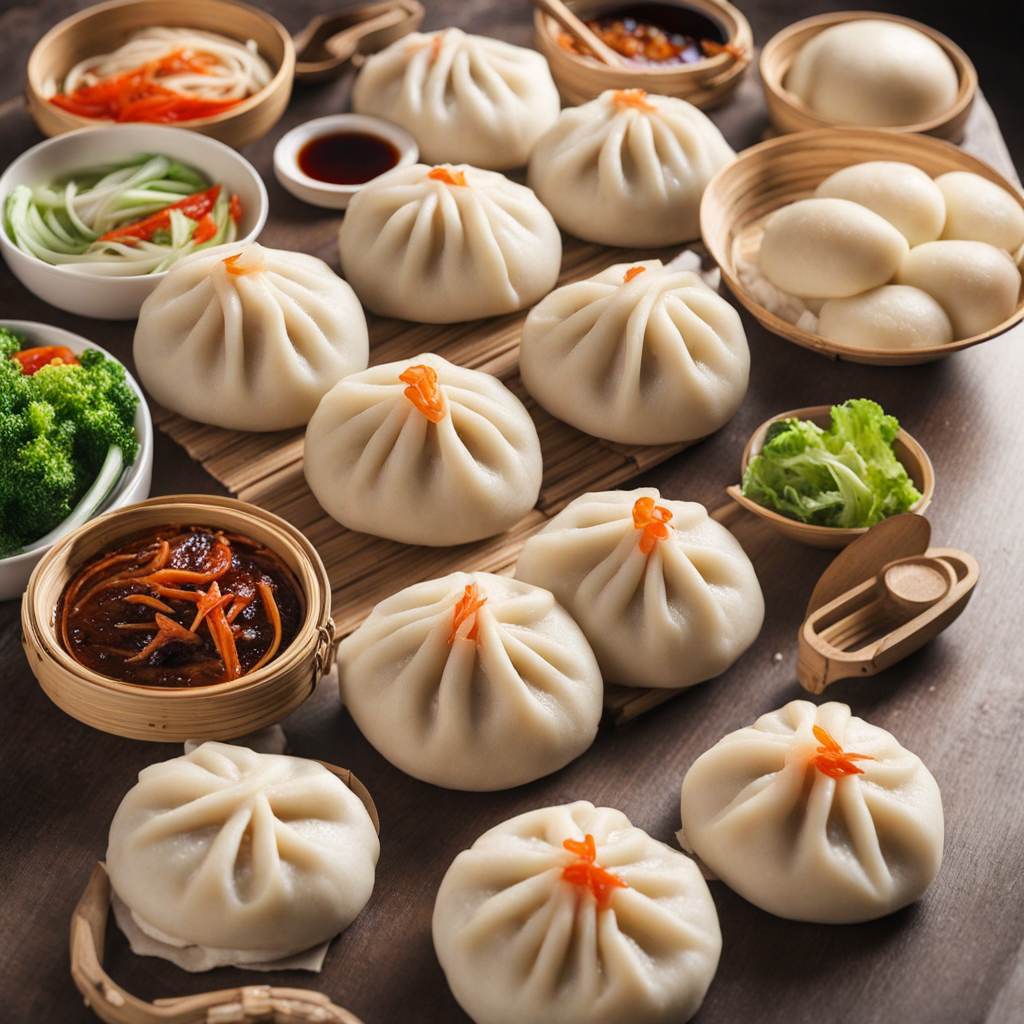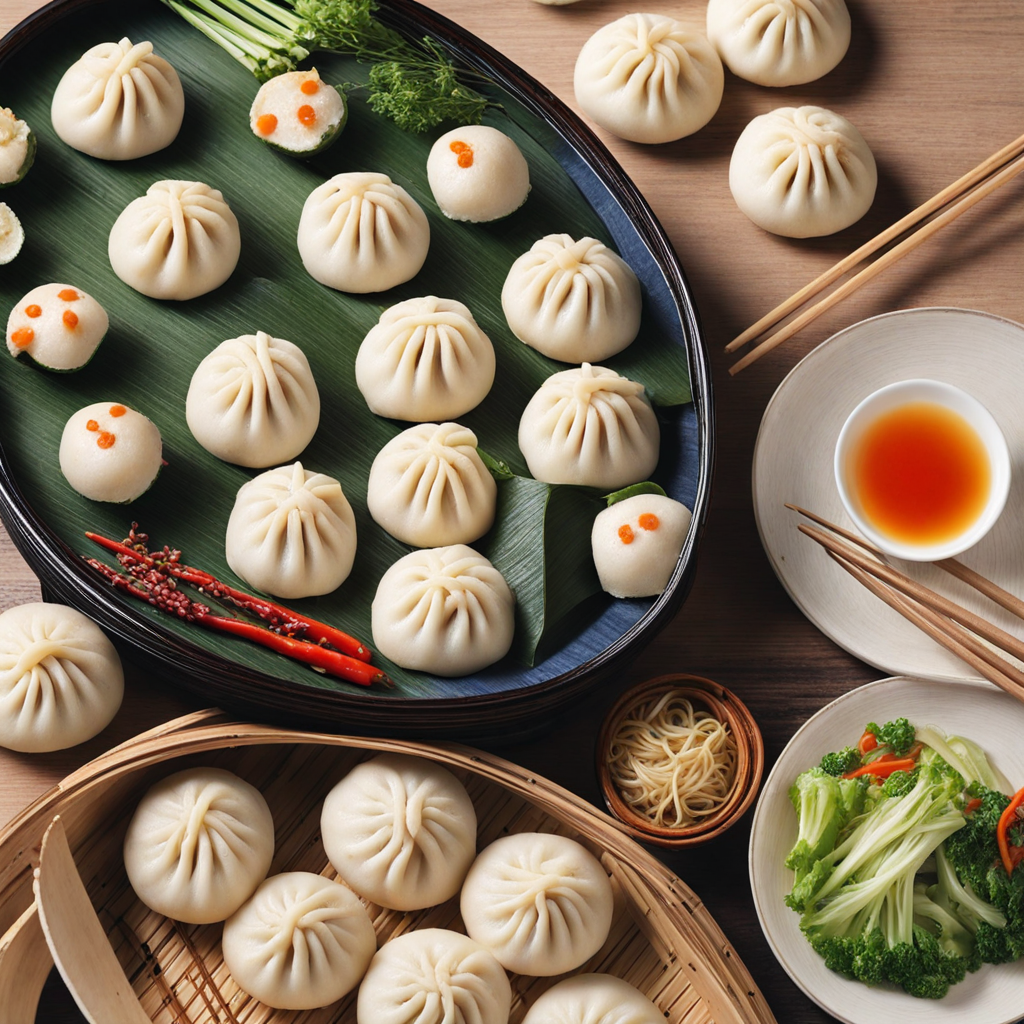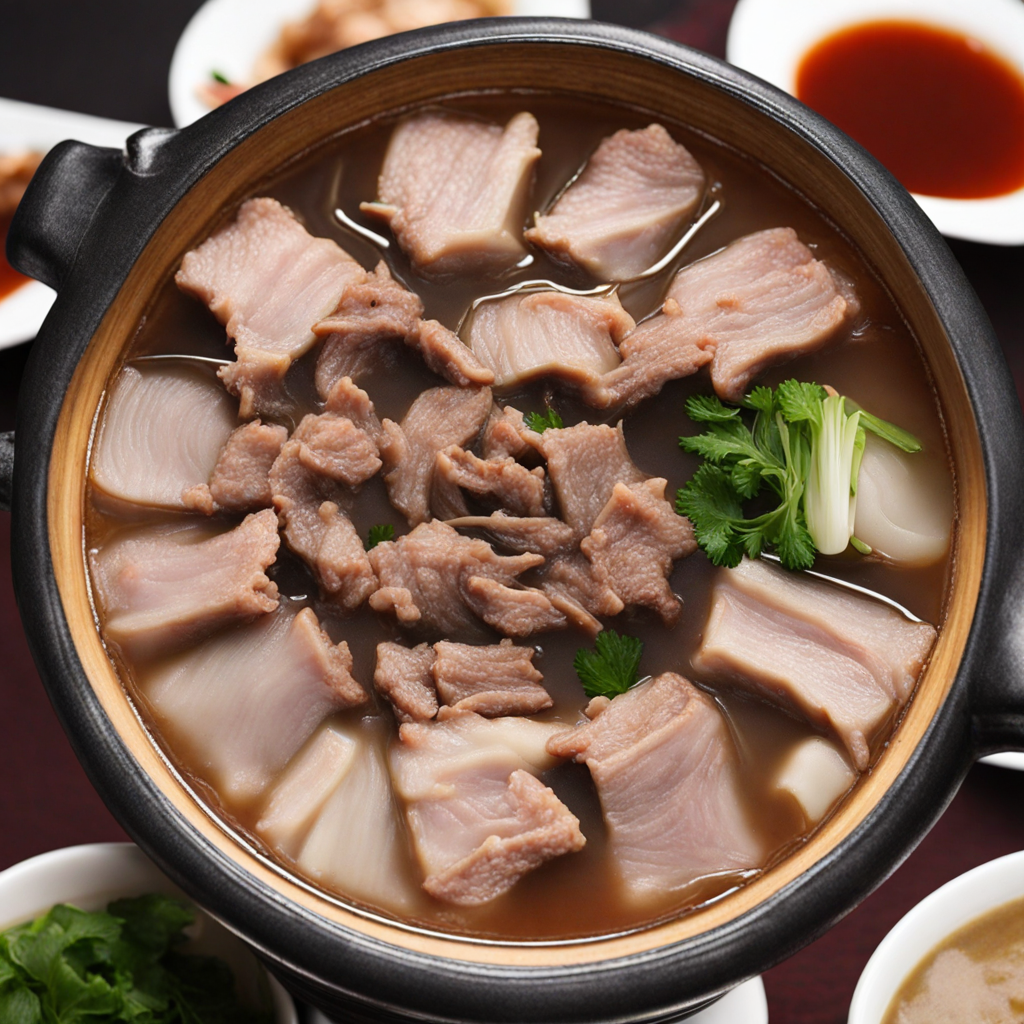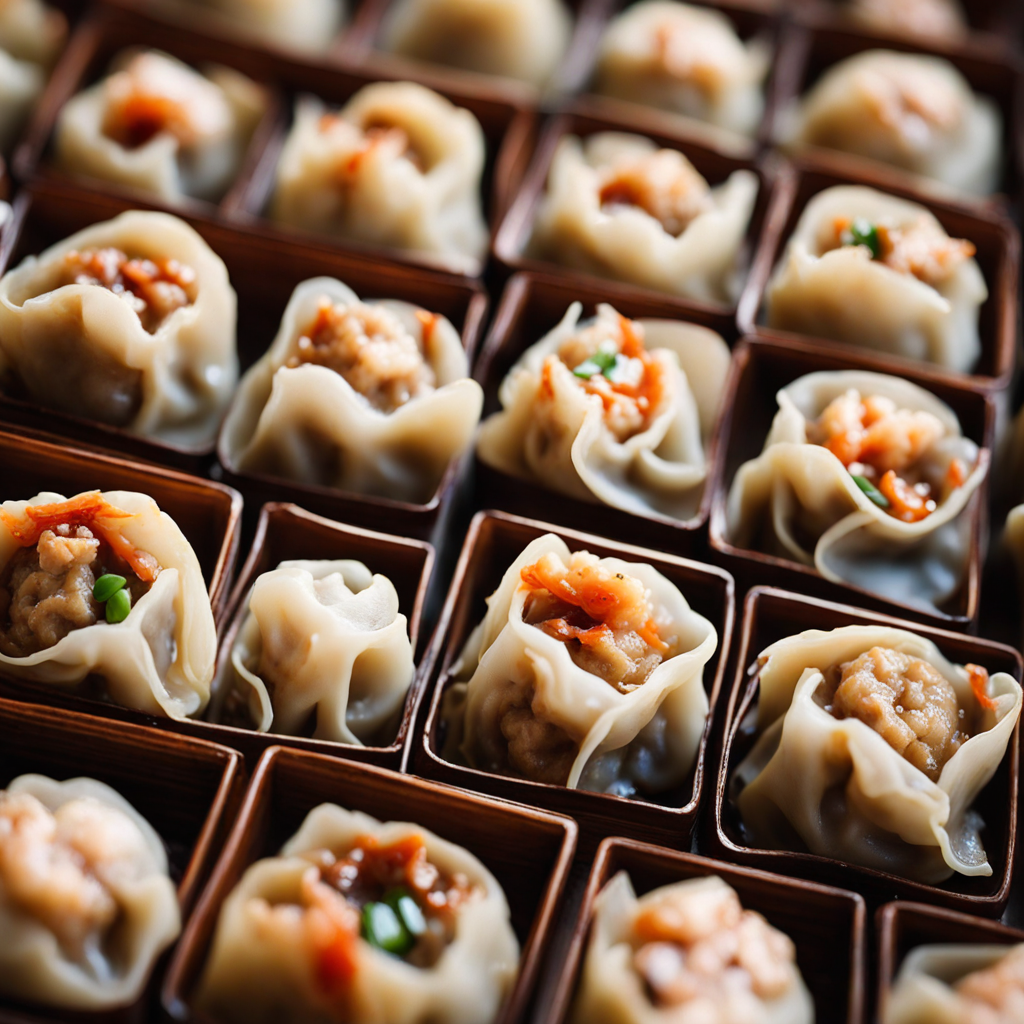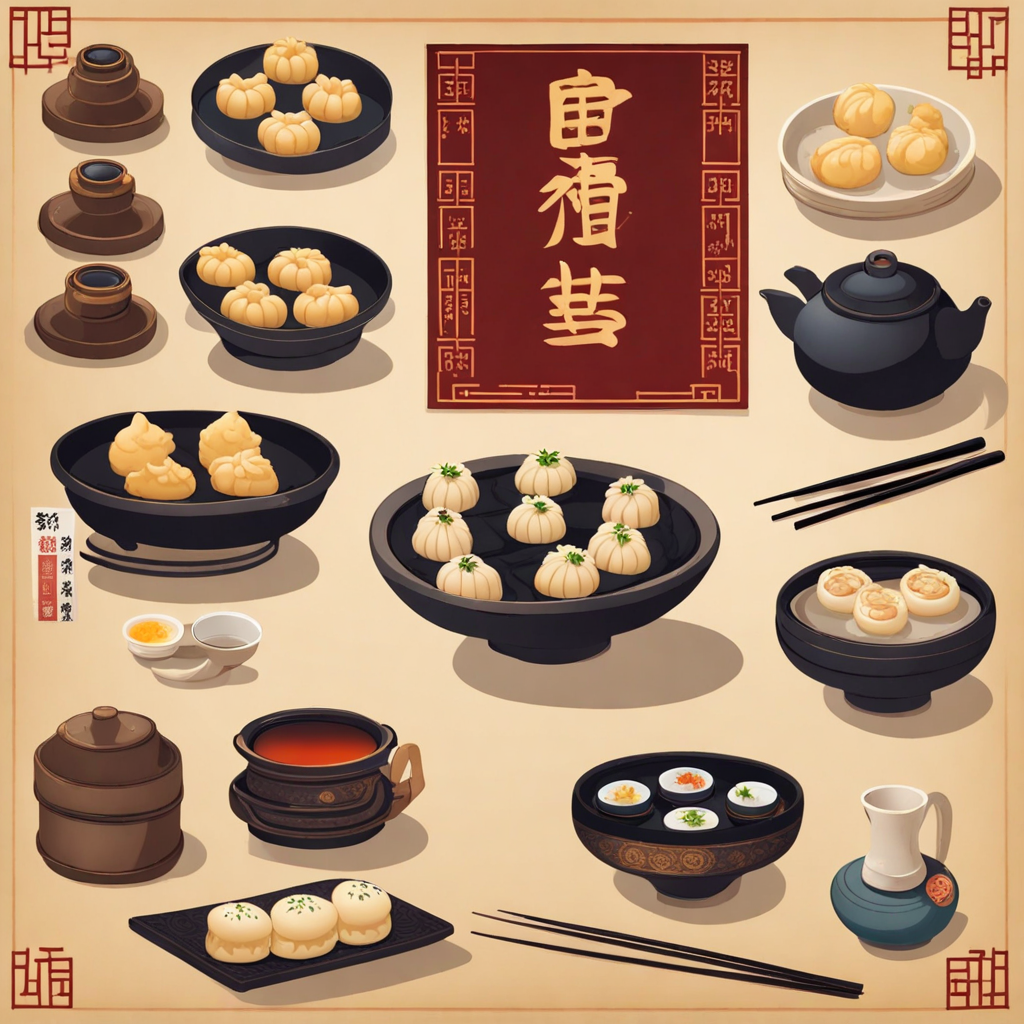Baozi
Baozi, a delightful and traditional Chinese dish, is a type of steamed bun that encapsulates a variety of fillings, making it a versatile and satisfying meal option. The dough is made from simple ingredients, typically flour, water, and yeast, which are kneaded to create a soft and fluffy texture after steaming. The buns are often round or oval in shape, showcasing their pillowy exterior that is both inviting and comforting. The joy of baozi lies not only in its texture but also in the multitude of flavors it can hold within. Inside each baozi, you can find an assortment of fillings that range from savory to sweet. Common fillings include minced pork, chicken, or vegetables mixed with aromatic spices and sauces, which meld together during the steaming process to create a burst of flavor with every bite. There are also sweet variations filled with red bean paste or sesame paste, providing a delightful contrast to the savory options. This diversity allows baozi to cater to various tastes, making it a beloved dish among locals and travelers alike. Eating baozi is often a communal experience, enjoyed during family gatherings or street food outings. The act of sharing a steamer basket filled with these delectable buns fosters a sense of togetherness, as everyone reaches in to select their favorites. Whether dipped in a tangy soy sauce or enjoyed plain, baozi is more than just food; it embodies the warmth of Chinese culture and hospitality. For anyone looking to explore new culinary landscapes, baozi offers a unique taste experience that is sure to leave a lasting impression.
How It Became This Dish
The History of 包子 (Bāozi): A Culinary Journey Through Time #### Origins of 包子 The story of 包子 (bāozi), a beloved Chinese steamed bun filled with various ingredients, can be traced back to the Three Kingdoms period (220-280 AD). The earliest form of bāozi is believed to have been inspired by the practice of wrapping meat and vegetables in dough, a concept that was likely influenced by the nomadic tribes of northern China who needed portable food that could sustain them during their travels. One of the most famous legends surrounding the origin of bāozi is attributed to the warlord Zhuge Liang. According to the tale, during a military campaign, Zhuge Liang sought a way to offer sacrifices to the spirits of his fallen soldiers. To do this, he allegedly created dumplings shaped like human heads, known as "shāoróu," to symbolize the offerings. Over time, these dumplings evolved into the softer, rounded buns we know today, filled with meat, vegetables, or sweet pastes, and were referred to as bāozi. The term "包" (bāo) means "to wrap," while "子" (zi) is a diminutive suffix often used in Chinese to indicate something small or cute. Thus, bāozi literally means "wrapped thing," aptly describing the bun’s form. #### Cultural Significance Bāozi is more than just food; it is a symbol of hospitality and comfort in Chinese culture. Traditionally, bāozi is often served during important festivals and gatherings, such as the Lunar New Year, when families come together to prepare and enjoy meals. The act of making bāozi can be a communal activity, bringing families and friends together in the kitchen. Each region of China has its variation of bāozi, reflecting local ingredients and culinary traditions. In Chinese culture, food has a deep connection to family and community. The round shape of bāozi represents unity and togetherness, making it a fitting dish for celebrations. Furthermore, the fillings can vary widely, from savory meat and vegetables to sweet red bean paste, allowing for personalization and creativity in preparation. This adaptability has made bāozi a staple in Chinese cuisine, embodying the essence of home-cooked comfort food. #### Evolution and Regional Variations As bāozi spread across China, regional variations began to emerge, each with unique characteristics that reflect local tastes and traditions. In northern China, especially in Beijing and Tianjin, you can find jiaozi (dumplings) and mantou (plain steamed buns) alongside the more traditional meat-filled bāozi. The fillings in northern bāozi often include pork, beef, or even lamb mixed with scallions, ginger, and soy sauce. In southern China, particularly in Guangdong province, bāozi takes on a different form, known as char siu bao. These buns are filled with sweet and savory barbecued pork and are often served in dim sum restaurants as a popular choice among diners. The dough is slightly sweeter and lighter, reflecting the southern palate's preference for sweeter profiles. In the eastern provinces, such as Jiangsu, bāozi can be made with a thinner dough and filled with a blend of seafood and vegetables, often highlighting the region's rich aquatic resources. Meanwhile, in western China, the influence of local spices and ingredients creates bāozi with a bold, spicy kick, often featuring fillings like lamb and cumin. #### Modern-Day Bāozi With globalization and the advent of technology, bāozi has transcended its humble origins to become a popular street food in urban areas of China and abroad. In cities like Shanghai, Beijing, and Chengdu, bāozi stalls can be found on nearly every street corner, selling freshly steamed buns filled with a plethora of ingredients. The rapid rise of food trucks and modern eateries has also introduced innovative takes on bāozi, incorporating international flavors and fusion concepts. In recent years, bāozi has gained significant popularity outside of China, particularly in Western countries where it is embraced as a trendy food item. Restaurants and food festivals celebrate the art of bāozi-making, showcasing both traditional and modern interpretations. Furthermore, the rise of social media has allowed food enthusiasts to share their experiences, creating a global community centered around this delightful dish. #### Health and Sustainability As the world grapples with issues of health and sustainability, bāozi has also adapted to meet contemporary dietary preferences. With the rise of vegetarianism and veganism, many restaurants now offer plant-based versions of bāozi filled with mushrooms, tofu, and an array of vegetables. This adaptability ensures that bāozi remains relevant, catering to the diverse tastes and needs of modern eaters. Moreover, the use of locally sourced ingredients in making bāozi supports the movement towards sustainable eating. As chefs and home cooks become more conscious of their environmental impact, the focus on seasonal produce and sustainable practices in bāozi preparation reflects a broader trend towards responsible food consumption. #### Conclusion The journey of bāozi from its ancient origins to its modern-day status as a global culinary phenomenon is a testament to the adaptability and enduring appeal of this simple yet profound dish. Rooted in tradition and steeped in cultural significance, bāozi has evolved over the centuries while remaining a symbol of home, community, and togetherness. Whether enjoyed at a bustling street stall in Beijing, a dim sum restaurant in Hong Kong, or even a trendy eatery in New York City, bāozi continues to bring people together, inviting them to share in its deliciousness and the stories it carries. As it continues to evolve, one thing is certain: bāozi will always hold a special place in the hearts of those who savor its warmth and flavor, embodying the rich tapestry of Chinese culinary heritage.
You may like
Discover local flavors from China


